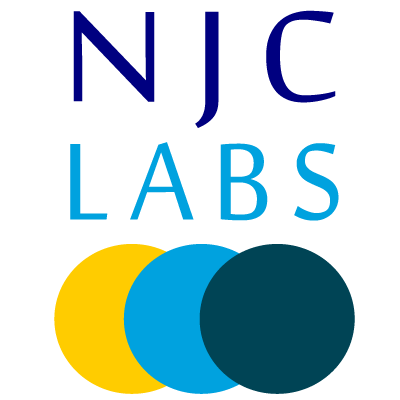MuleSoft Runtime Fabric VMs/Appliance model has entered Extended Support.Product will be End Of Life by 1st February 2024 & End Of Support by 1st February 2025. Please refer to this link. Please see the MuleSoft Back Support Policy for all other details. Migrating to self-managed Kubernetes, also known as "rolling your own" Kubernetes cluster, can offer several advantages depending on your organisation's needs and capabilities. However, it's essential to carefully consider the benefits and challenges before making this decision.
NJC Labs are Salesforce Partner specialised in MuleSoft
Why NJC Labs
- RTF Setup and Migration Experience
- Certified Architects, Developers, Mentors and Go to Champions
- Tier 1 MuleSoft expertise at a moderate cost base
- Leading MuleSoft platform knowledge as a certified MuleSoft partner
- Comprehensive support in all stages of the MuleSoft implementation lifecycle
- Ready to use customizable automation frameworks to accelerate your project delivery
Migrating from Anypoint Runtime Fabric VMs to SMK
Migrating from MuleSoft's Runtime Fabric on VMs/Bare Metal to a Self-managed Kubernetes (SMK) environment requires careful planning and execution to ensure a smooth transition.
Here's a high-level overview of the steps involved in the migration process:
RTF Lifecycle
Assessment and Planning
Understand the current Runtime Fabric setup, including the deployment architecture, resource utilisation, and dependencies.
Identify the target Kubernetes infrastructure (on-premises or cloudbased) and decide on the Kubernetes distribution (e.g., Bare Metal, OpenShift, EKS, GKE, AKS).
Plan the migration strategy, considering factors like downtime constraints, data migration, and application testing.
Kubernetes Cluster Setup
Set up the target Kubernetes cluster according to your chosen Kubernetes distribution.
Configure networking, routing, storage, and security settings as per your requirements.
Data Migration
If your applications rely on persistent data stored within Runtime Fabric, plan and execute the data migration process to the new Kubernetes environment.
This may involve setting up data storage solutions like Persistent Gateways or utilising cloud-based storage solutions.
Service Discovery and Load Balancing
Consider Kubernetes Services and Ingress Controllers to manage traffic to your applications.
Configure networking, routing, storage, and security settings as per your requirements.
Secrets Management
In Kubernetes, you'll need to migrate and manage sensitive data, such as API keys or database credentials, using Kubernetes Secrets.
Monitoring and Logging
Set up monitoring and logging solutions compatible with Kubernetes to ensure you can observe the health and performance of your applications.
Testing
Thoroughly test the migrated applications in the Kubernetes environment to identify and resolve any issues.
Conduct load and performance testing to ensure the Kubernetes cluster can handle the expected traffic.
Deployment
Gradually migrate applications from the existing Runtime Fabric to the new Kubernetes environment.
Consider a phased approach to minimise disruption and allow for easy rollback in case of issues.
User Training and Support
Ensure that the relevant personnel are trained on managing and operating the Kubernetes environment.
Provide ongoing support and address any concerns during and after the migration.
Monitoring and Optimisation
Continuously monitor the Kubernetes environment and optimise MuleSoft licensing, resource utilisation, performance, and cost efficiency.
Keep in mind that the migration process might vary based on your specific environment and requirements. It is essential to thoroughly test each step and have a rollback plan in case unexpected issues arise during the migration process. Consider engaging with experts or consultants experienced in Kubernetes migrations to ensure a successful and smooth transition.
Why Migrate to Self Managed K8s
Customization and Control
With a self-managed Kubernetes cluster,you have full control over the configuration, optimization, and customization of your cluster's components. This allows you to tailor the cluster to meet your specific requirements and performance needs.
Cost Efficiency
Managed Kubernetes services offered by cloud providers come with a cost, and this cost can scale up as your cluster grows. By managing your own Kubernetes cluster,you might be able to reduce operational expenses, especially if you have the necessary expertise in-house.
Performance
Self-managed clusters can be optimised for your workload's specific requirements,potentially leading to better performance and resource utilisation compared to generic managed services.
Hybrid and Multi-Cloud Scenarios
If your organisation operates across multiple cloud providers or in hybrid environments, a self-managed Kubernetes cluster could provide more flexibility and portability.
Compliance and Security
Self-managed Kubernetes gives you greater control over security configurations and compliance measures, which can be critical for industries with strict regulatory requirements.
Runtime Fabric supports
If you prefer to standardise your own bare-metal solutions using public K8s distributions, depending on your affinity to public clouds and in-house Kubernetes expertise, the following self-managed Red Hat OpenShift offerings can enable both On-Prem and public cloud bare-metal solutions
Anypoint Runtime Fabric as a Shared Responsibility
The successful operation of Anypoint Runtime Fabric is a shared responsibility. It is critical to understand which areas you provide and manage and which areas MuleSoft provides.
The following image illustrates different MuleSoft and customer responsibilities for Anypoint Runtime Fabric instances:
